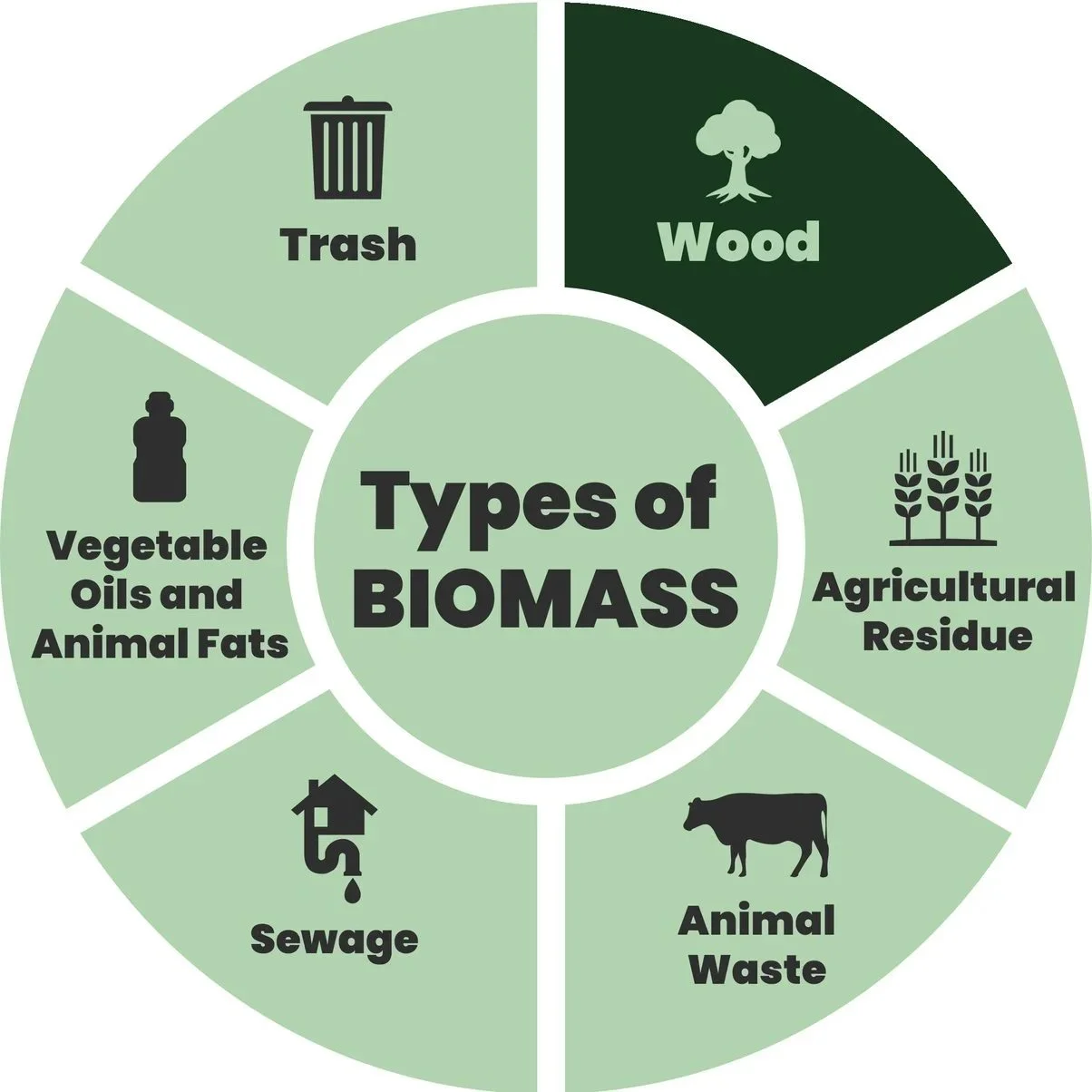Understanding Biomass
What is Biomass?
The official definition of biomass, according to the Oxford Dictionary, is “natural materials from living or recently dead plants, trees and animals, used as fuel and in industrial production, especially in the generation of electricity.”
However, even with this definition the term “Biomass” can be a confusing one because it covers so many different kinds of material. This is why we created this page breaking down the different forms of biomass, and talking about the reasons we chose to work specifically with “woody biomass” for the first Woodland BIO facility producing sustainable gasoline from biomass.
Types of Biomass:
Wood: Wood is one of the oldest and most widely used sources of biomass. It is suspected to be one of the first materials man ever started using, for fire, tools, and construction. Today, wood as a construction material is undergoing a renaissance because it is the most sustainable construction material we have, with the ability to sequester carbon into our buildings (Learn More 1). Woodland BIO is looking to produce sustainable gasoline from the tree residuals that are created during the harvesting and processing of other wood products, like construction materials.
Animal waste: Animal waste, such as cow manure and poultry litter, is actually very energy-dense and a prime candidate for turning into fuel. This has the added benefit of preventing the release of methane that happens when animal waste naturally breaks down in the open. Methane is a greenhouse gas that is roughly 30 times more potent than CO2, so processing these products in a way that makes use of the trapped energy and prevents the release of methane is a priority.
Agricultural residuals: Agricultural residue refers to the biomass materials that are left in the fields after harvesting crops, such as corn stalks, wheat straw, rice husks, and sugarcane bagasse. These residues can be used to produce heat, electricity, or biofuels through various processes, such as combustion, gasification, pyrolysis, or fermentation.
Sewage: Sewage is the wastewater that contains human and animal excreta, as well as other organic and inorganic substances. Sewage can be treated to produce biogas through anaerobic digestion, similar to animal waste. Sewage can also be treated to produce biosolids, which are nutrient-rich organic materials that can be used as fertilizers or soil conditioners.
Vegetable oils and animal fats: Vegetable oils and animal fats are triglycerides that can be obtained from plants or animals. They can be used directly as biodiesel or blended with petroleum diesel for transportation. They can also be converted into other biofuels, such as Sustainable Vehicle Fuels (SVFs) or Sustainable Aviation Fuel (SAF).
Trash - Municipal Solid Waste (MSW): Trash is controversial to include in a “biomass” list because it involves many materials that do not meet the official definition quoted earlier. However, when it comes to generating energy, trash can still be helpful. Including trash in energy plans shows the big idea: that maybe one day, we can turn everything we throw away into something useful, like energy. That’s part of the dream of a circular economy—where nothing goes to waste.
Why Woody Biomass?
Woody biomass is a renewable and sustainable source of energy that can be obtained from the forests of Pennsylvania. Woody biomass has many advantages over other types of biomass, such as:
It is naturally regenerative in PA hardwood forests. The forests of Pennsylvania are managed to ensure that they grow back after harvesting, providing a continuous supply of wood for bioenergy production. Learn all about it on our Forest Sustainability page.
It is naturally abundant in PA hardwood forests. The forests of Pennsylvania cover about 60 percent of the state’s land area and contain more than 100 native tree species (Learn more 2). They are currently gaining roughly 20 billion tons of biomass each year after accounting for extraction and decay (Learn More 3).
It is clean to handle. Unlike some other types of biomass, such as animal waste or sewage, woody biomass does not have unpleasant odors or contain harmful pathogens. Woody biomass can be easily stored and transported without causing environmental or health problems.
It is easy to process. Compared with biomass sources like trash or sewage, woody biomass is much more uniform, making it easier to digest in processes like gasification, fermentation, or pyrolysis.
It smells good. Woody biomass has a pleasant aroma that comes from the natural compounds in the wood. Almost everyone enjoys the smell of wood and wood products, such as firewood or furniture. This makes it much easier to gain local support for building a new project, when compared to handling stinky forms of biomass, like animal waste, trash, or sewage.
Woody biomass is a valuable resource that can provide multiple benefits for the environment, economy, and society. By using woody biomass for energy production, we can reduce greenhouse gas emissions, enhance energy security and diversity, create jobs and income opportunities, and support rural development and forest management. Woodland BIO is committed to developing innovative and sustainable solutions for converting biomass into valuable fuels and products, starting with woody biomass.















